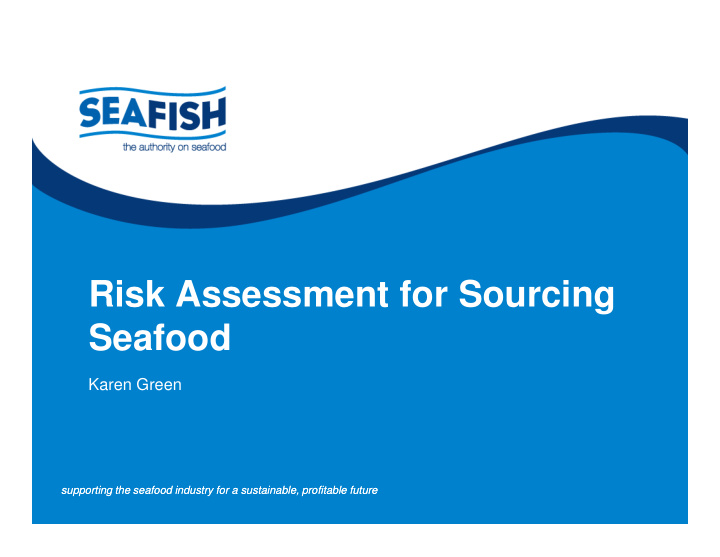



Risk Assessment for Sourcing Seafood Karen Green supporting the seafood industry for a sustainable, profitable future supporting the seafood industry for a sustainable, profitable future
What is RASS? • Strong pressures from the supply chain - translated into a requirement for suppliers to be able to ‘justify’ their buying and sourcing policy. • A Risk Assessment for Sourcing Seafood – an online web- based database founded on objective, scientifically based information that will enhance a buyer’s ability to source seafood responsibly. • Aim is to provide scientifically-based, factual information at stock, fishery and ecosystem levels which can be interrogated in different ways according to the information required, with a similar approach to information on aquaculture. supporting the seafood industry for a sustainable, profitable future supporting the seafood industry for a sustainable, profitable future
Current responsible sourcing guides supporting the seafood industry for a sustainable, profitable future supporting the seafood industry for a sustainable, profitable future
Scope of RASS • Stock status, fishery characteristics, ecological effects and management for wild and farmed commercial species landed and imported into the UK. Start with 38 RSG species. • Stock status information similar to RSGs - for stocks at risk time series information showing stock trajectories. • • Tool with the ability to include fisheries and ecosystem Tool with the ability to include fisheries and ecosystem information from public information and projects ie ecosystem risk assessment of the SW fisheries and North Sea flatfish fisheries. • More on management, mitigating measures and seasonality. • In time, ethical, welfare, and safety information will be added. supporting the seafood industry for a sustainable, profitable future supporting the seafood industry for a sustainable, profitable future
Next steps - feedback • Board and panel approval for an ‘authoritative’ resource that builds on the scope of the RSGs. • Looking for a stakeholder steering group to help shape the outputs. Now in the scoping phase • • What do stakeholders want to see? What do stakeholders want to see? • What additional information is required by the supply chain? • How do stakeholders want to be able to interrogate the information? • How should the information be structured? supporting the seafood industry for a sustainable, profitable future supporting the seafood industry for a sustainable, profitable future
Recommend
More recommend